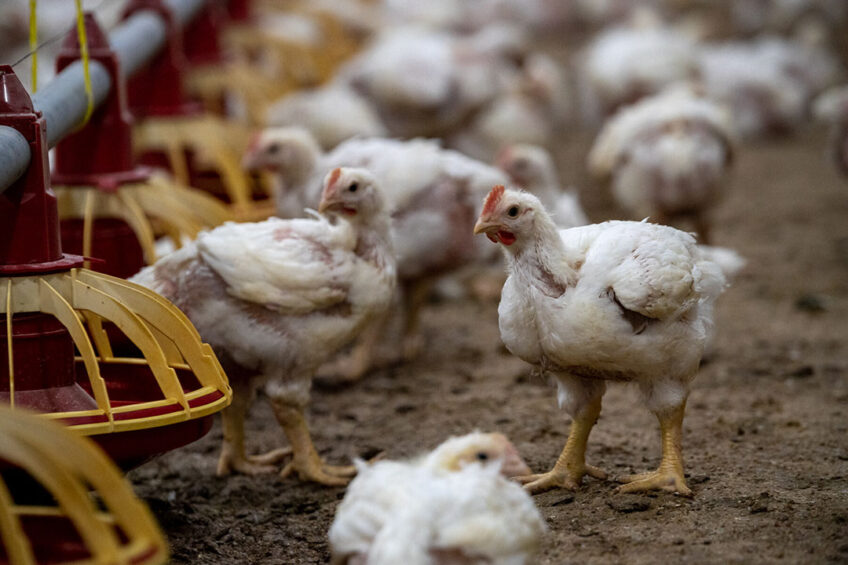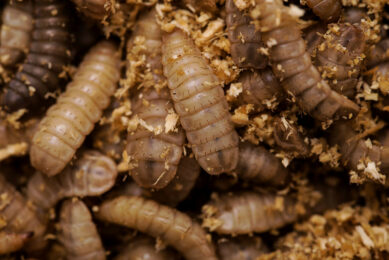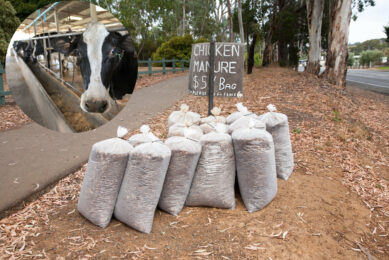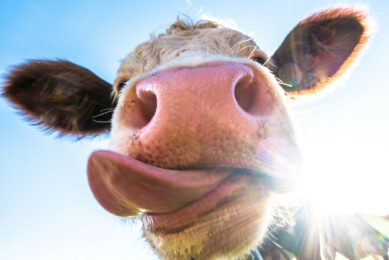5 key interventions to control Salmonella

Foodborne diseases, such as salmonellosis, remain a significant cause of morbidity, mortality and economic losses in the world today. In 2019 EFSA reported it affecting 88, 000 people, making it one of the most reported zoonotic diseases. Food of animal origin, such as eggs and poultry meat are the main sources documented in Europe and the world today.
Animals and flocks become infected with Salmonella from one of many sources; namely contaminated feed, drinking water, parent stock or the environment. A Salmonella outbreak within a flock, leads to rapid spread from one animal to another. EFSA experts predict that salmonellosis cases in humans could drop by 50%, when assessing current laying hens’ Salmonella targets, reducing from 2 percentage units to 1.
Pathogen control within the feed to food chain requires multiple interventions to be incorporated. Salmonella control and monitoring programmes are essential to all stakeholders within this chain, as part of due diligence. Starting at raw materials within feed material processing and storage facilities, to feed mills and compound feed production, farms and animal populations, slaughterhouses and meat carcasses to food processing facilities and meat. Focusing on the feed mill and farm ‘link’, Salmonella control is achieved within 5 interventions.
5 INTERVENTIONS TO CONTROL SALMONELLA
![]() Preventing Salmonella from entering the facility. Raw material controls are essential in identifying the high-risk raw materials. Both vegetable and animal protein meals are the feed materials that are generally categorised as high-risk type feed materials. Transportation vehicles should be sanitised and undergo regular maintenance procedures. Additionally, pest controls ensure birds and rodents which carry Salmonella, are not entering the facility, as a practical approach in preventing its entry. Early treatment of high-risk raw materials with a Kemin antimicrobial solution is cost effective and allows for the antimicrobial solution to start taking effect, additionally reducing the microbial load being introduced into the mixer.
Preventing Salmonella from entering the facility. Raw material controls are essential in identifying the high-risk raw materials. Both vegetable and animal protein meals are the feed materials that are generally categorised as high-risk type feed materials. Transportation vehicles should be sanitised and undergo regular maintenance procedures. Additionally, pest controls ensure birds and rodents which carry Salmonella, are not entering the facility, as a practical approach in preventing its entry. Early treatment of high-risk raw materials with a Kemin antimicrobial solution is cost effective and allows for the antimicrobial solution to start taking effect, additionally reducing the microbial load being introduced into the mixer.
![]() Preventing the growth of Salmonella within the facilities’ environment. This is achieved by controlling dust release and condensation risks at locations within the facility. Dust is a source of environmental re-contamination, as it is a primary vehicle for Salmonella. Condensation occurs due to significant temperature differences between the feed, the air or equipment surfaces. The higher water activity in feed material supports Salmonella growth. Ventilation in the facility is crucial, ensuring that air flow is controlled and monitored, especially air used in cooling the pellets, which should be filtered and originate from outside the facility, to reduce recontamination of feed. Environmental contamination is combated using cyclic treatment with a Kemin antimicrobial, such as Sal CURB, in the feed material.
Preventing the growth of Salmonella within the facilities’ environment. This is achieved by controlling dust release and condensation risks at locations within the facility. Dust is a source of environmental re-contamination, as it is a primary vehicle for Salmonella. Condensation occurs due to significant temperature differences between the feed, the air or equipment surfaces. The higher water activity in feed material supports Salmonella growth. Ventilation in the facility is crucial, ensuring that air flow is controlled and monitored, especially air used in cooling the pellets, which should be filtered and originate from outside the facility, to reduce recontamination of feed. Environmental contamination is combated using cyclic treatment with a Kemin antimicrobial, such as Sal CURB, in the feed material.
![]() Intervention is having ‘kill’ steps within the facility in place. This is achieved with the synergistic effects of factors such as heat and a chemical treatment. The heat treatment is applied through feed mash conditioning and pelleting. The chemical treatment is the addition of Sal CURB, the antimicrobial solution. It is essential, as part of feed hygiene, that conditioning and pelleting temperatures required to kill pathogenic moulds and bacteria, such as Salmonella, are reached. Excessive temperatures may have detrimental effects on essential nutrients or bioactive compounds.
Intervention is having ‘kill’ steps within the facility in place. This is achieved with the synergistic effects of factors such as heat and a chemical treatment. The heat treatment is applied through feed mash conditioning and pelleting. The chemical treatment is the addition of Sal CURB, the antimicrobial solution. It is essential, as part of feed hygiene, that conditioning and pelleting temperatures required to kill pathogenic moulds and bacteria, such as Salmonella, are reached. Excessive temperatures may have detrimental effects on essential nutrients or bioactive compounds.
Feed safety is a core value at Kemin, ensuring the Sal CURB dispersing solution is added, which kills upon contact, additionally works in synergy with heat treatment, to achieve microbial kill-off.
![]() Intervention is preventing re-contamination. This is achieved through the residual effect experienced after the application of Sal CURB. This consists of a synergistic combination of organic acids, their salts, surfactants and a corrosion inhibitor, to ensure that firstly the volatile components kill on contact and secondly the salts provide extended residual protection. The surfactants enhance the dispersibility of the Sal CURB and its active ingredients in an activated water solution, ensuring maximum dispersion and penetration within the feed matrix.
Intervention is preventing re-contamination. This is achieved through the residual effect experienced after the application of Sal CURB. This consists of a synergistic combination of organic acids, their salts, surfactants and a corrosion inhibitor, to ensure that firstly the volatile components kill on contact and secondly the salts provide extended residual protection. The surfactants enhance the dispersibility of the Sal CURB and its active ingredients in an activated water solution, ensuring maximum dispersion and penetration within the feed matrix.
![]() Intervention Kemin has developed innovative non-antibiotic solutions which work in vivo and are instrumental in protecting birds from Salmonella infections. They act by preventing or reducing intestinal carriage, ultimately decreasing the prevalence of Salmonella in breeding and commercial flocks.
Intervention Kemin has developed innovative non-antibiotic solutions which work in vivo and are instrumental in protecting birds from Salmonella infections. They act by preventing or reducing intestinal carriage, ultimately decreasing the prevalence of Salmonella in breeding and commercial flocks.
FormaXOL is a doubly microencapsulated product, which uses two main ingredients (functional flavours and organic acids) to control Salmonella. Studies done with FormaXOL consistently demonstrate a reduction of carriage by up to 2 log10 cfu per gram of intestinal content, as well as a reduction in the percentage of positive analyses in poultry flocks.
Effective feed safety
These interventions are supported by a team of experts within our three critical Kemin services, these include the customer laboratory monitoring, application engineering technology and technical support.
Our approach to controlling Salmonella is aligned with biosecurity programmes and their critical control points, measures and actions implemented at identified points. Collecting and monitoring such data, through representative sampling and data collection procedures, allows for data driven decision making. This ensures effective feed safety and animal health risk assessments and corrective actions within the monitoring programme are preventing Salmonella
re-contamination throughout the value chain.







